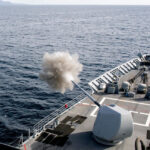
The Most Bizarre Weapons Used by U.S. Navy Units
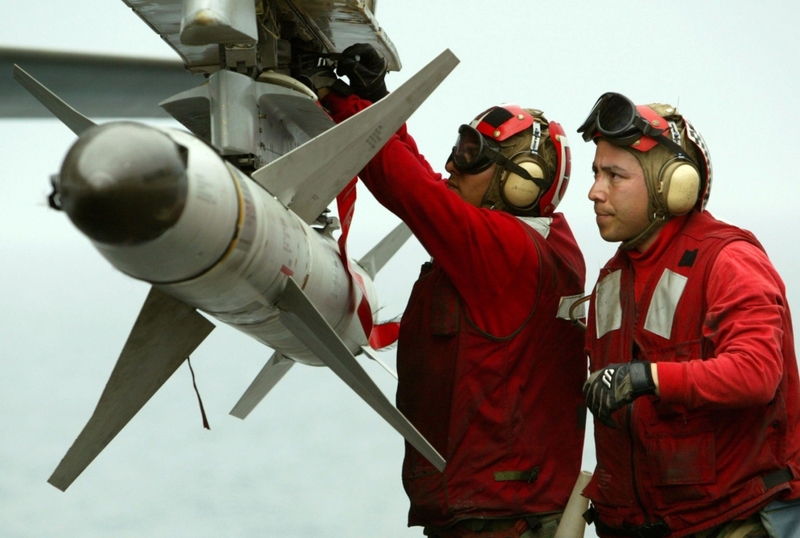
Trillions of dollars are poured every year into funding the military. Much of this money goes into researching groundbreaking warfare technologies to help keep the U.S. army ahead of the game. With over 300,000 active service members, the U.S. Navy is one of the military’s largest branches. Take a look at some of the most powerful weapons employed by the U.S. Navy, and those used by its most elite unit — the Navy SEALs.
The LOCUST
LOCUST drones got their cool acronym thanks to their ability to swarm battlefields and jam communications from afar. These future warfare aircraft are folded into tubes and shot into the sky. Their main purpose is to hurt the enemy’s ability to fire accurately, while also wasting much of their ammo.

These flying saucers cost around $15,000 per unit, and can be used as disposable firing targets for enemy forces, which distracts the enemy, wastes their precious ammo and saves soldiers’ lives. These drones also jam hostile signals and communications, making them one of the coolest inventions that will soon appear in the battlefield.
The Mark 48 Heavyweight Torpedo
When Mark 60 CAPTORs aren’t enough, the U.S. Navy employees the Mk 48 Heavyweight Torpedo. This is a fast torpedo that can travel at 32 miles per hour. While it may not sound very fast, remember that the world’s fastest submarine only moves at 40 mph. These torpedoes be used from a fair distance, as they have a range of over five miles.
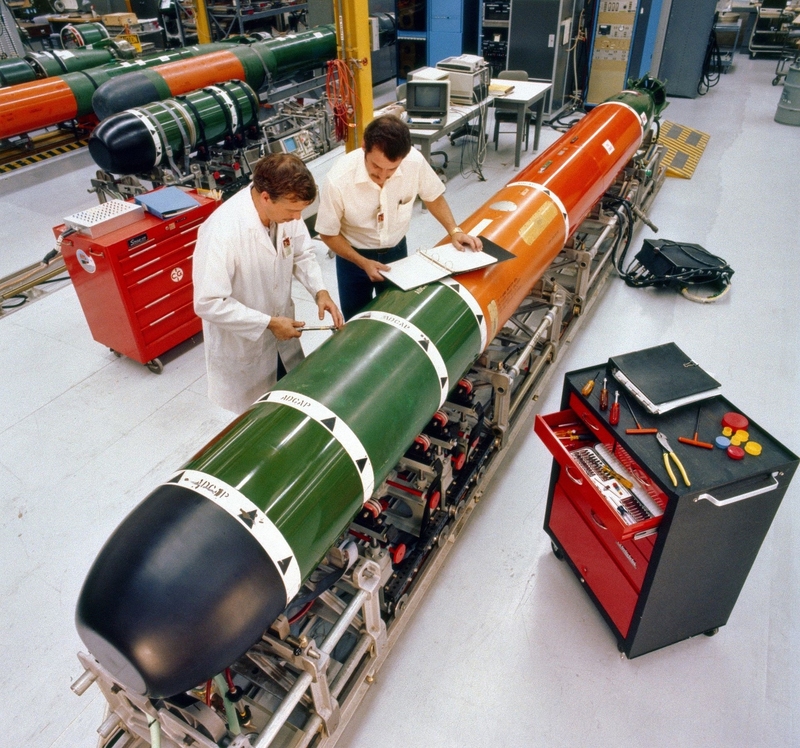
Whether the target is above water or deep inside the ocean, the Mark 48 torpedo will find and track its target. This is due to a smart homing system used to track hostile vessels. If that’s not enough, this 650 pound monster also features an advanced sonar system and remote digital controls.
The Barrett M82 (Standardized by U.S. Army as M107)
The Barrett M82 is a semi-automatic anti-material sniper rifle that is used to take out heavy targets from long distances. It’s used in many countries, although the United States uses a special version of the gun called M107.

The Barrett M82 was used throughout many American wars, including the Gulf, Iraq and Afghanistan wars. It weighs roughly 30 pounds and costs almost $9,000. M82’s support two types of ammo, .50 caliber rounds and .416 Barrett bullets. It can pierce just about any armored vehicle when shot at the right angle, and is highly dangerous, even from a great distance.
Joint Direct Attack Munition
Joint Direct Attack Munitions are guidance kits that are used to convert “dumb” (low tech) bombs into all-weather precision bombs. These can be installed on almost any bomb from 500 pounds up to 2,000 pounds and instantly override the nomenclature of the bomb they’re installed on.

Boeing made over 300,000 of these from 1998 to 2016, and they cost about $25,000 per unit. While this may sound like a lot of money for a bomb “upgrade” kit, it saves a lot of money for the U.S. military by circumventing the need to replace old “dumb” bombs with expensive, laser-guided ones.
The AGM-65 Maverick
AGM-65 Maverick missiles weigh 462 to 670 pounds and carry a massive 300-pound warhead. They are built pierce armor and then detonate from inside an enemy’s vehicle, causing even resilient tangos to implode. Mavericks are placed onto Navy and Airforce jets and cause even hostile tank drivers to shake in panic.
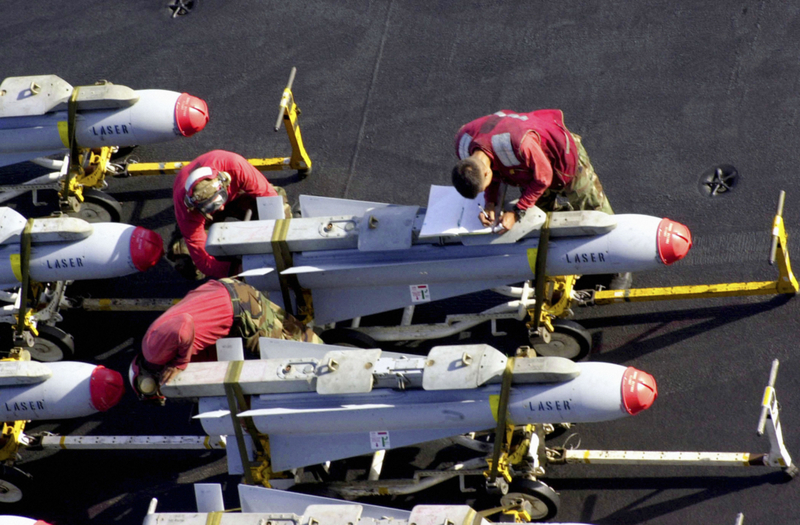
AGM-65 Mavericks have been used extensively by all branches of the U.S. military. In 1991, America launched 5,000 Mavericks during Operation Desert Storm. They were able to effectively destroy most of Iraq’s Air Force and anti-aircraft facilities, and eventually, its command and communication facilities, crippling the Iraqi army.
The DMLGB
The DMLGB is a versatile bomb made by Lockheed Martin. Its name stands for Dual Mode Laser Guided Bomb. They are highly reliable and work in all weathers, while being compatible with the MK 82 warhead and standard GBU-12 Airfoil Group (AFG).
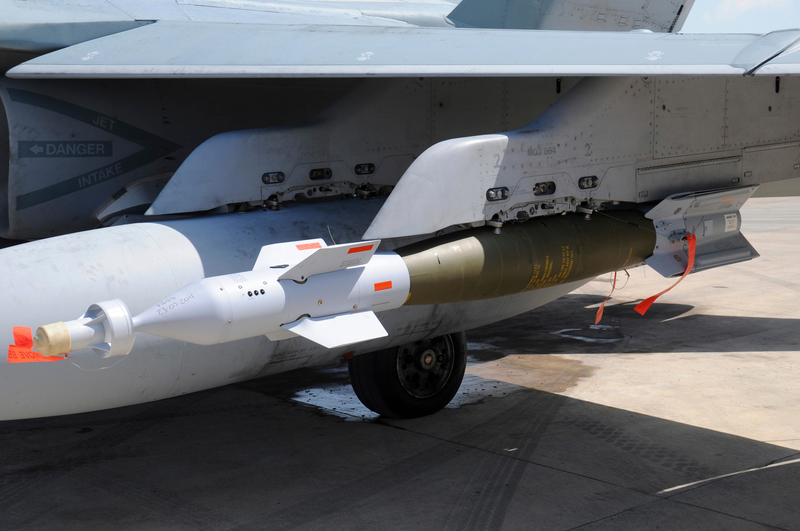
More than 7,000 of these have been sold to the U.S. Navy and the Marines, and they are mostly used on F/A-18 Hornets, Super Hornets, and AV-8B Harrier.
The RIM-1616 Rolling Airframe Missile
Meet the U.S. Navy’s RIM-116 Rolling Airframe missiles. Although they are similar to Sea Sparrow missiles, there are a few differences between them. Rolling Airframe missiles are much lighter than Sparrows and have a smaller frame. The missile’s name comes from its ability to roll around in mid-flight, making it very hard to intercept.
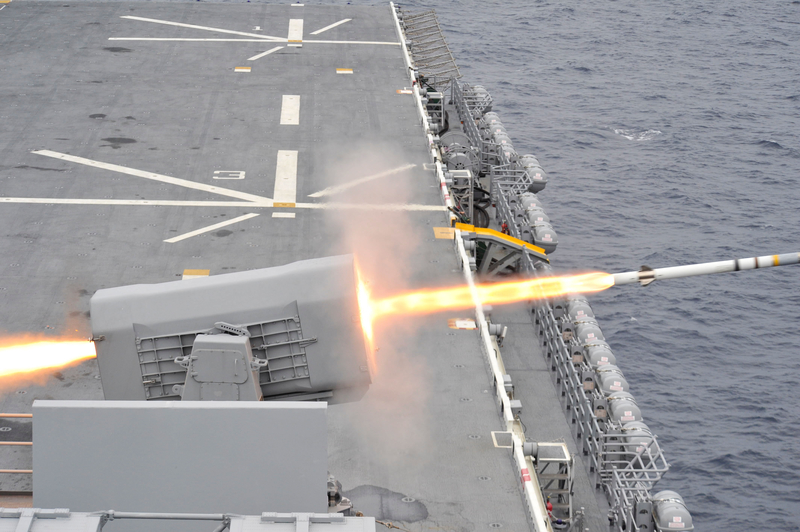
Rolling Airframe missiles are very cheap relative to other U.S. Navy missiles, but can be quite effective nonetheless. These warfare devices have an effective range of 5.5 miles and can travel at up to 1,500 miles per hour. Their speed, rolling abilities, and low cost is what makes them a very attractive solution for Navy skirmishes.
The M136 AT4
The M136 AT4 is an unguided, portable rocket launcher that can fire a single light tank-destroying missile. There’s no recoil when shooting the rocket launcher, which is one of the reasons it’s so popular. The AT-4 was employed by the United States in almost every major war since the 1989 US Invasion of Panama, and is currently used in a vastly upgraded version.

The M136 AT4 fires highly explosive, piercing missiles fitted with HEAT warheads. This rocket launcher weighs 15 pounds and has a range of 0.2 miles. It’s a popular anti-vehicle weapon thanks to being very easy to carry and use in a large variety of warfare situations.
The Mark 77 Incendiary Bomb
If you’re a pyromaniac, you should probably never be in charge of the Mark 77 Incendiary bombs. These powerful war tools cause a massive inferno mere seconds after exploding, and are used very sparingly as a result. It’s use was banned worldwide in 1980, after large populations of civilians were burnt alive by these weapons.
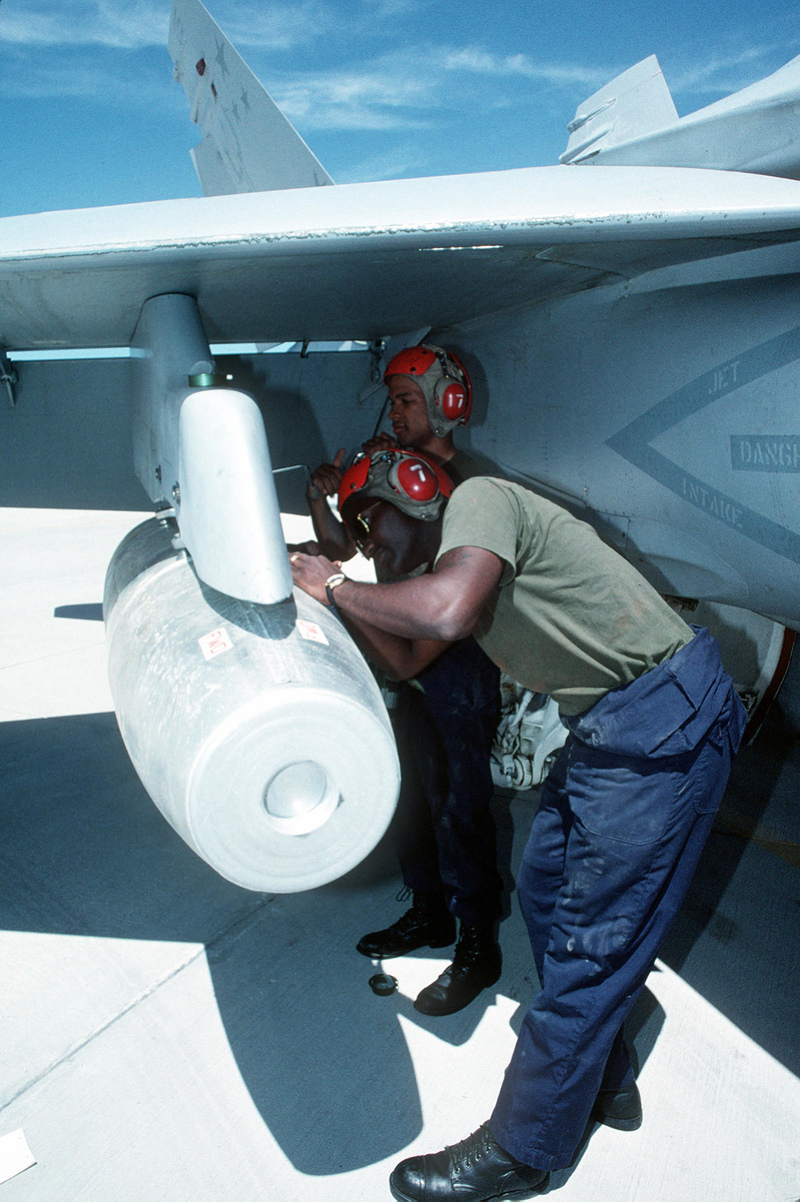
Mark 77 Incendiary bombs were used by the United States Marines during Operation Desert Storm and Operation Iraqi Freedom. More recently, highly controversial reports of unauthorized use of these by the U.S. military have surfaced, but they are currently unproven and remain in the rumor zone at the moment.
The M240
The M240 machine gun is a Caliber 7.62 mm NATO turret that can decimate even well-armored targets. M240s are usually fired from an integrated bipod or tripod, and can also be mounted on a vehicle. These weapons are quite heavy and weigh more than 25 pounds, which is why they are used almost exclusively when mounted.
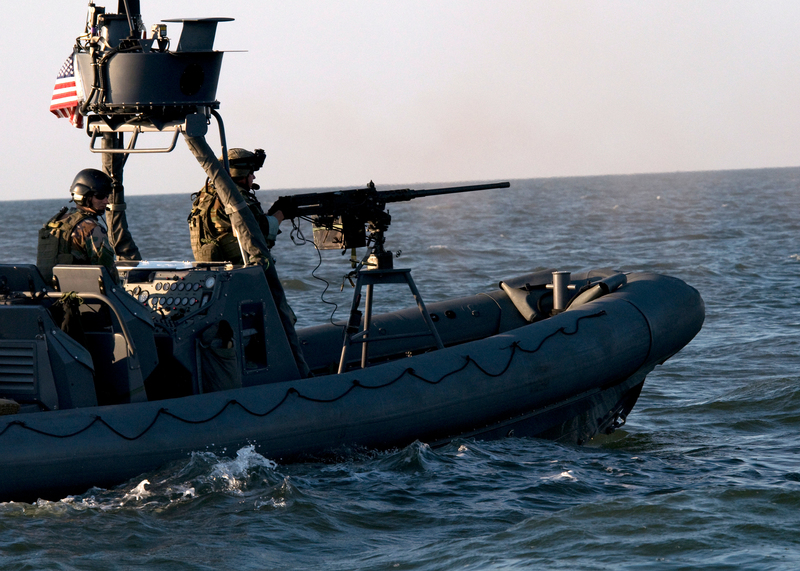
The M240 uses an average cartridge of 7.62×51mm, and can hit targets up to 1,200 yards away when docket. The M240 shoots at rates of up to 100 rounds per minute, with a required barrel change every 10 minutes or so. It uses an air-cooling system to keep it from overheating, although short breaks are required between bursts.
The General-Purpose Bomb
General-purpose bombs are mainly used against larger targets, and have been in use since World War II. The U.S has since updated them, and branched these into a four unit family, called the Mark 80, which goes through up to the Mark 84. Each subsequent unit from the first to the latter weighs twice as much.
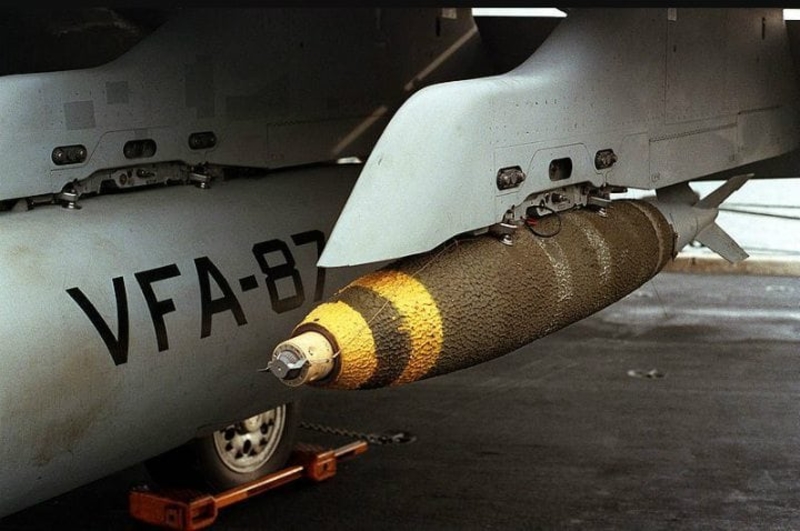
The main difference from the Mark 80 to the Mark 84 is basically size. Mark 81 and Mark 82 are the most popular ones in the family, and strike an effective balance between weight and precision. Mark 84’s weigh a whopping 2,000 pounds, and are only used in very specific cases due to their bias towards massive, earth scorching damage.
The SOCOM MK 13
The SOCOM MK 13 is a bolt-action sniper rifle used by the Navy SEALs, as-well-as other ground units. It fires .300 Winchester Magnum rounds, also known as WinMags, and is extremely useful for long-distance target take-down missions.
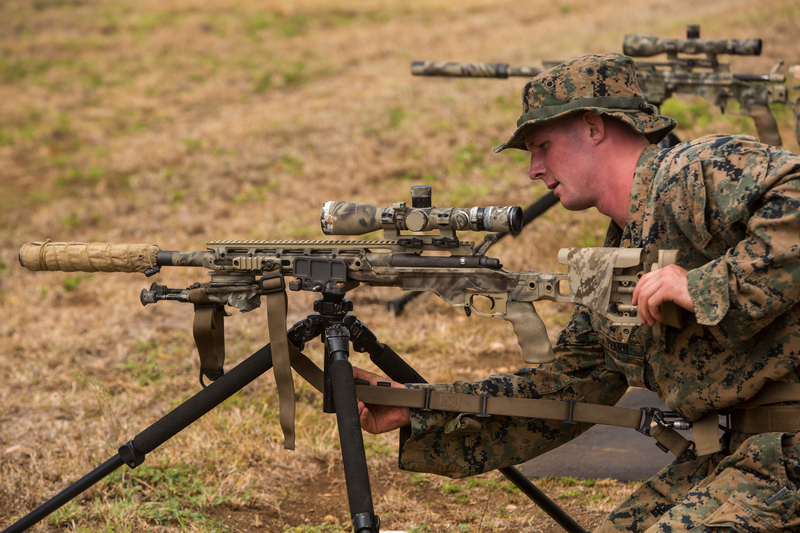
The SOCOM MK 13 is a relatively light-weight sniper rifle, weighing just over 10 pounds. It can effectively shoot up to 0.75 miles, which makes it an excellent choice for long-range hits. MK 13’s are often docked on a tripod before being shot, which makes them one of the most accurate guns in the world.
The Penguin Anti-Ship Missile
While they may sound cute, Penguin anti-ship missiles are far from it. Designed to be launched from Seahawk helicopters, they allow Navy choppers to easily take out hostile ships while staying in a safe range. Each missile weighs about 835 pounds and holds a 275-pound warhead that can sink even the biggest and baddest ship.
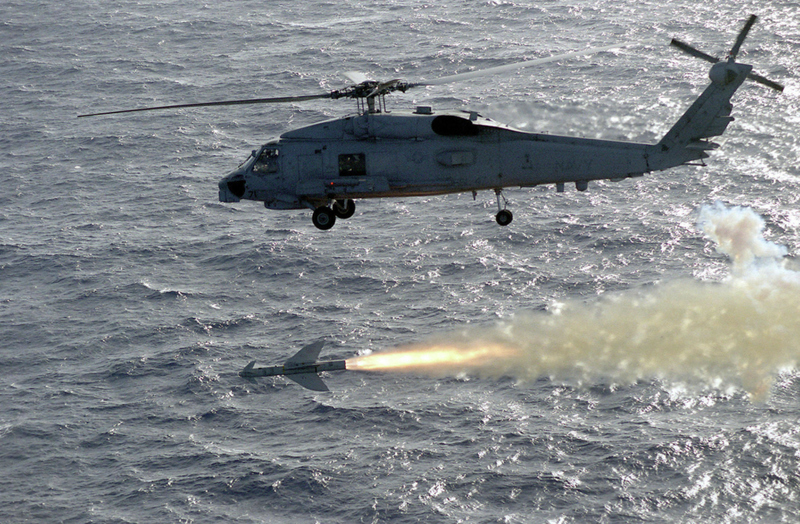
These advanced missiles can automatically dodge hostile threats in-mid flight, effectively circumventing their enemy’s defense systems. Penguins are built for crushing armor-plated targets, and do so with a delayed explosion mechanism. They first penetrate an enemy ship, and only detonate once they are inside its cabin. Go Penguins!
The Electromagnetic Railgun
If you’re a fan of the Death Star, you’ll be quite excited to learn about this one. Electromagnetic Railguns are about as close as it gets to the Empire’s superweapon. These massive devices use electromagnetic forces (instead of bullets and rockets) to shoot particles at high velocity, destroying anything in their path.
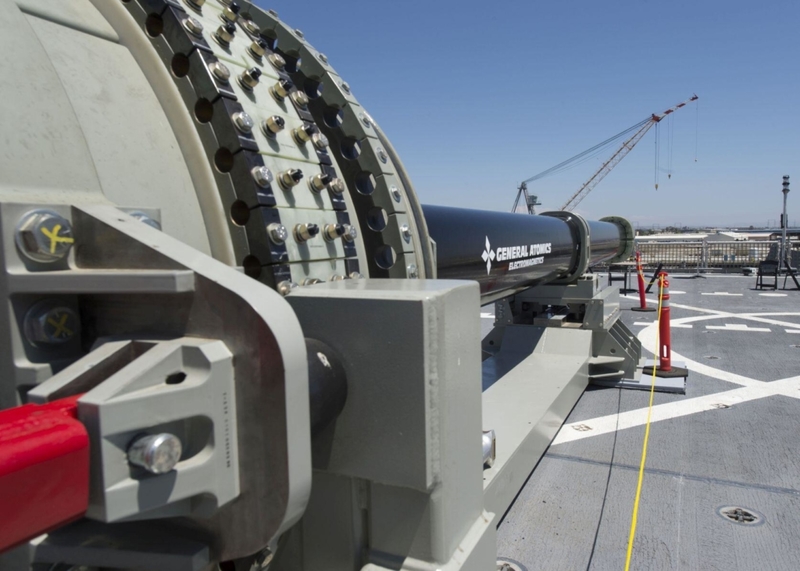
Electromagnetic Railguns shoot particles 6,000 miles per hour. Engineers still have some time before these become fully functioning, as the weapon is still in developmental stage. The moment this technology is officially deployed, many of the Navy’s tactics would quickly have to get re-adjusted.
The Sea Sparrow Missile (RIM-7)
Sparrow missiles are considered the standard when it comes to U.S. Navy and NATO warships. These missiles can easily take down airborne and land threats. Although many attributes of the Sea Sparrow Missile are classified, we know that they were initially developed in the ‘70s and have been substantially improved since.
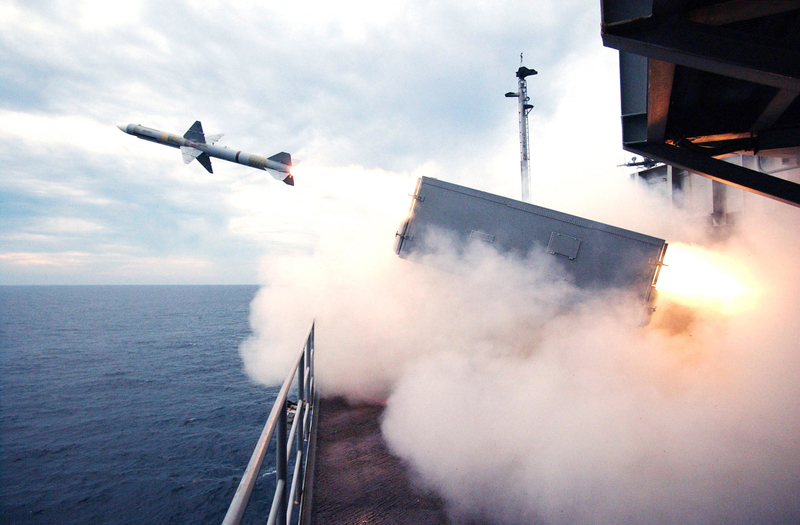
Sparrow missiles are usually the first weapons employed to counter oncoming threats on U.S. territory. They are highly accurate and are fitted with effective warheads. Most foreign hostile vehicles that get hit by one of these will explode into a million pieces before they ever knew what hit them, which makes them strong deterrents!
The Paveway Laser-Guided Bomb
Things were quite messy back when U.S. jets used unguided bombs to attack enemies. These would often miss targets, and potentially hurt civilians in their path. Nowadays, the Navy uses Paveway Laser-Guided Bombs. These use a precise laser-guiding system that allows them to hit very small areas with a tiny margin of error.
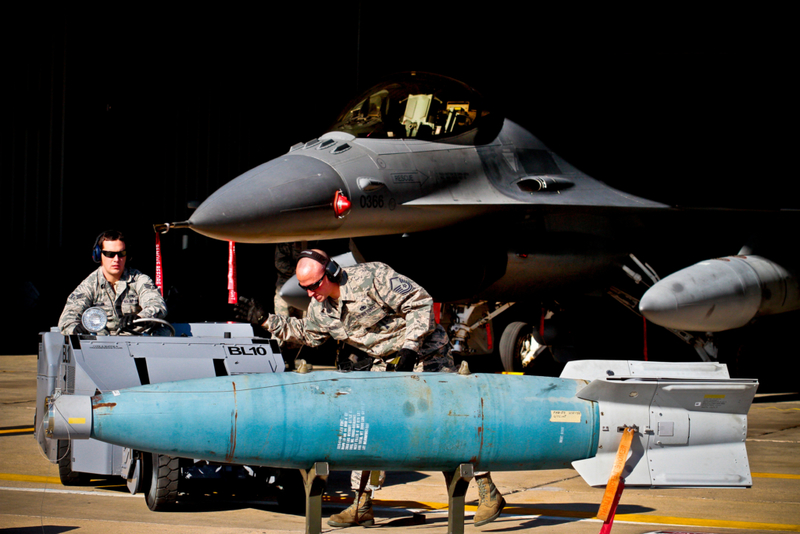
Paveway Laser-Guided bombs are used for destroying sensitive land targets without causing collateral damage. Half of the bombings in the Iraq War were done using Paveway Laser-Guided bombs, which helped quickly tip the scales in the United State’s favor, and were used to destroy much of Iraq’s infrastructure with minimal casualties.
The AIM-120 AMRAAM Missile
AIM-120 AMRAAMs are the best missiles in aerial combat scenarios. The U.S. Navy and the U.S. Air Force have purchased more than 14,000 of these in recent years. An upgraded version of the AIM-120 missile, the AIM-260 JATM, is currently in production. These newer versions sport an increased range and decreased susceptibility to electronic signal jamming.
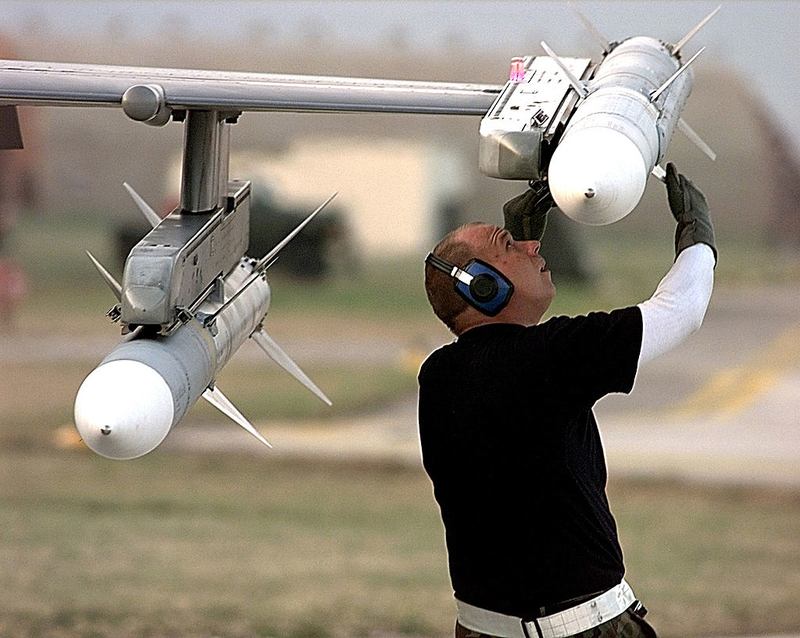
AIM-120 AMRAAM missiles can be launched in all weathers, and are “fire and forget” weapons, which means most of the work done automatically once a target has been fired at. These weigh about 335 pounds per missile, and can cost anywhere from $300,000 each, up to $1,786,000 for the most advanced models.
Anti-Submarine Rocket (ASROC) (VLA)
When Vertical Launch Anti-Submarine rockets are launched from Navy ships, they fly into the air and begin a series of mid-flight maneuvers with the goal of destroying a hostile submarine. Once the rocket is fully airborne, it flips and begins parachuting straight directly towards the target. After the Anti-Submarine rocket reaches the ocean, it quickly shoots a torpedo directly on its target.
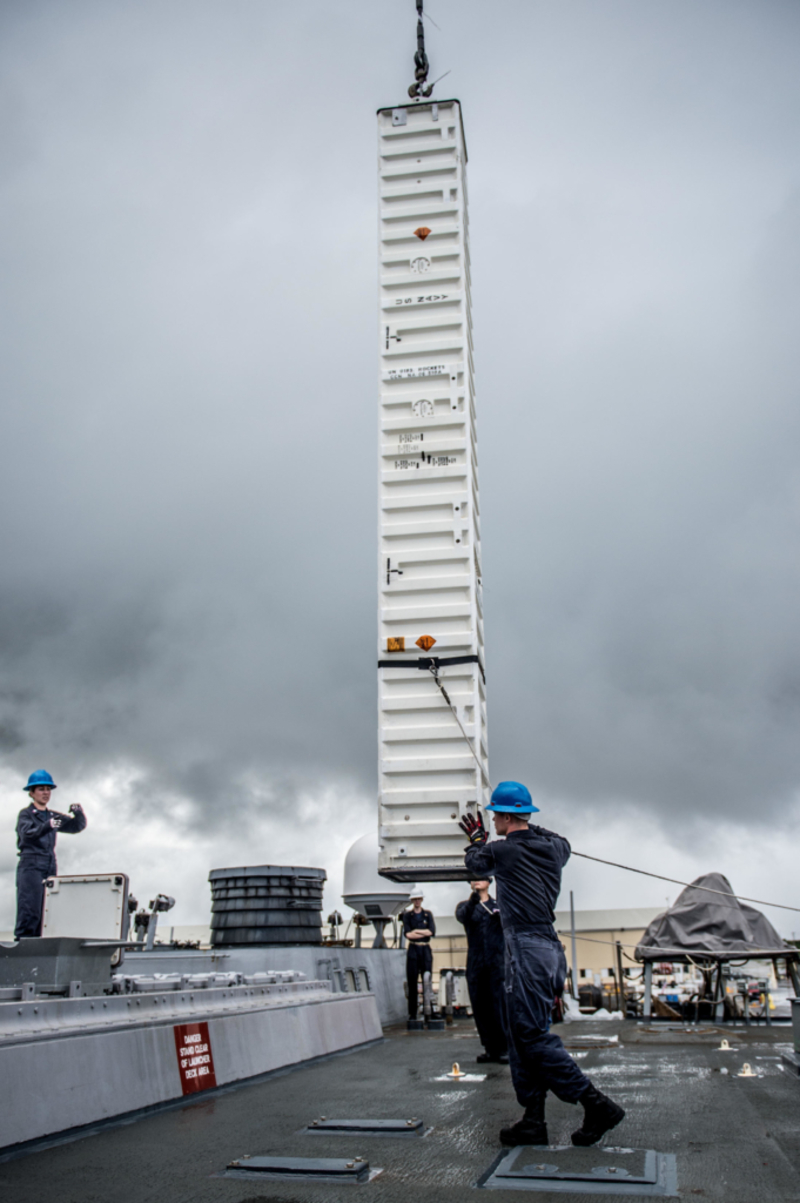
One good hit from an incoming torpedo can completely wipe out an enemy submarine. Lockheed Martin is the United State’s biggest manufacturer when it comes to Anti-Submarine Rockets. There are currently over a thousand of these in America’s missile cache.
The Mark 36 SRBOC
Mark 36 Super Rapid Blooming Offboard Chaff, also known as “Super-arboc”, is a short-range mortar used to foil incoming anti-ship missiles and cause them to miss their targets. Each launcher has six tubes that are arranged at different angles ready to fire the decoy system in case of an emergency.
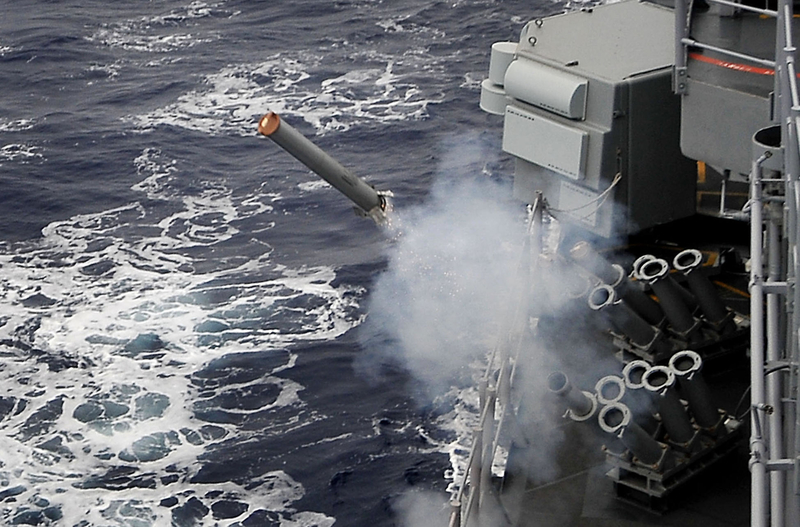
These are used by 19 navies around the world, and consistently help save soldiers’ lives during combat. Super-airbags deploy decoys that help deter missiles infrared and chaff radar scrambling technologies. A typical launcher holds 20 to 35 rounds of these decoys, and can be found on most modern Navy ships around the world.
The Benelli M4 Super 90
Navy SEALs and other military units often use the Benelli M4 Super 90 during tight infiltration missions, and deploy 70 and 76 mm shells when fired, hitting a large area. One of the major advantages of the M4 is its integrated A.R.G.O. tech, which helps dramatically reduce the likelihood of it jamming during a mission, and makes pumping between shots much easier and more reliable.

The Benelli M4 Super 90 weighs 8.42 pounds and can hit up to 55 yards away. It holds between 5 to 7 rounds, depending on the model. This is an idle weapon for indoor hostile infiltration missions, as it doesn’t require too much accuracy to hit.
The FN SCAR
The FN SCAR is a gas-operated self-loading assault rifle with a rotating bolt. It was built as a highly modular gun, and allows various additions to be made from scopes to a grenade launcher. The FN SCAR is extremely useful in both short and medium ranges, and is used extensively by the U.S. Navy, who owns anywhere from hundreds of thousands to millions of these.

A heavier version of the rifle called SCAR-H is used by some U.S. military branches. The gun uses 7.62×51mm NATO bullets instead of the standard 5.56×45mm NATO ammunition, and is able to cause much more damage as a result of the ammo’s additional weight.
The B61 Nuclear Bomb
The most terrifying weapon in the United State Navy’s arsenal without a doubt, the B61 nuclear bomb. After the Cold War ended, Uncle Sam was left with more than 3,000 of these. They were promptly cached into an unused arsenal of weapons, often called The Enduring Stockpile. It contains about 23,000 deadly weapons from the time nuclear weapons were still legal.
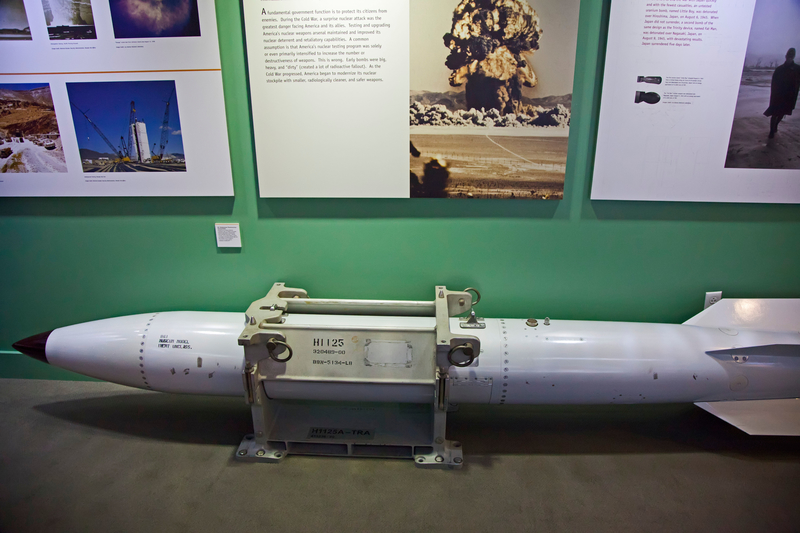
The B61 nuclear bomb has a maximal yield of up to 340 kilotons. It weighs about 700 pounds and causes untold chaos. The United States is opposed to the use of them, and actively hunts down the last free remnants of these bombs.
The Phalanx CIWS
The Phalanx CIWS, otherwise known as Sea-Wiz, is a close-in weapon system that destroys hostile anti-ship missiles and helicopters. It’s the last line of defense for U.S. vessels and can save units from incoming missiles. They fire a rapid succession of bullets and use a computer-controlled radar to hit their targets automatically.
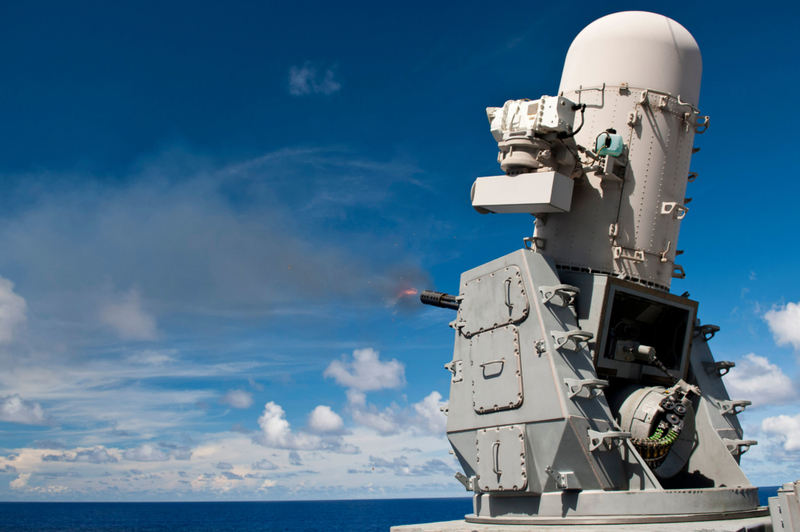
The Phalanx is outfitted on almost all of the U.S.’s Navy ships and usually holds the aforementioned M61 Vulcan cannon. The combination of these two creates an extremely potent defense system and helps save many lives.
The Mark 45 Gun (MK45)
Meet the Navy’s MK45s. These large and terrifying rifles can shoot down almost any aircraft with just a single hit. They are fully automatic and shoots 5-inch bullets that cause unbelievable damage upon impact. Mark 45 Guns are mostly used against flying aircraft, although some land targets have been destroyed by them.
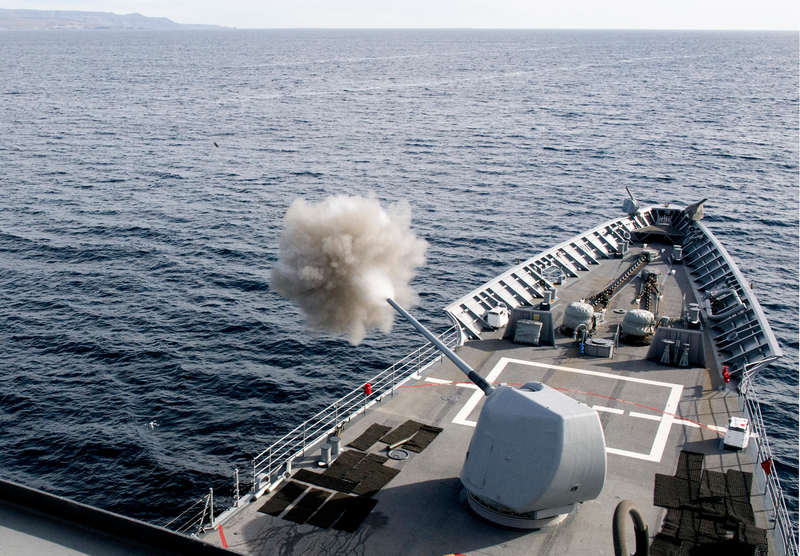
These turrets are mounted on almost every U.S. Navy vessel. It can shoot up to twenty shots per minute, and will easily tear apart even the most armored targets. Mark 45 guns are also much more economical than missiles, as each bullet “only” costs around $75,000 per shell, compared to the Navy’s missiles, which cost over a million dollars per unit.
The Mark 54 Lightweight Torpedo
The Mark 54 Lightweight Torpedo is a standard 12.75 inch torpedo used to destroy hostile submarines. It’s been in the Navy’s use since 2004, and is manufactured and sold by American defense contractor, Raytheon Systems. Each torpedo costs about $840,000 and weighs 608 pounds. They travel underwater at 46 miles per hour, making them faster than the world’s fastest submarine.
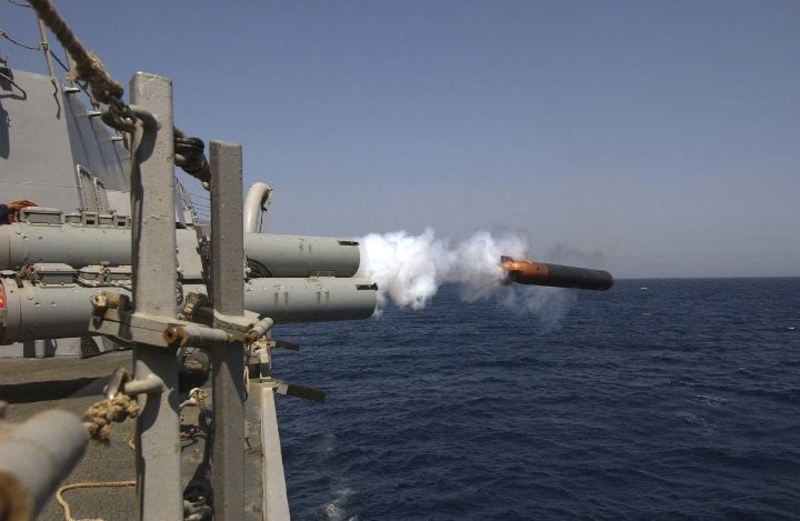
Mark 54 Lightweight torpedoes are currently in use by many modern Navy forces all across the world. These state-of-the-art torpedoes were developed due to various issues that were discovered in previous versions, namely the Mark 46 and Mark 50 torpedoes.
The M91A2
Another sniper-rifle often used by Navy SEALs is the M91A2. It is manufactured by Redick Arms Development. The M91A2 is one of DEVGRU’s most popular weapons, and countless terrorists have been put to sleep using this incredible tool.

The M91A2 weighs about 14 pounds, and is 43 inches long. Like the SOCOM MK 13, it can effectively shoot up to a range of 0.75 miles. Once shot, the bullet travels at about 2,500 feet per second, making it an extremely deadly tool for long-distance targets.
The SLAM-ER Missile
The SLAM-ER missile is a highly capable and accurate ballistic weapon that can easily eliminate both short to medium-range targets on both land and sea. They have an effective reach of 170 miles and cost about $500,000 each. This makes them a lot more economical than other, larger missiles, while still being quite deadly.
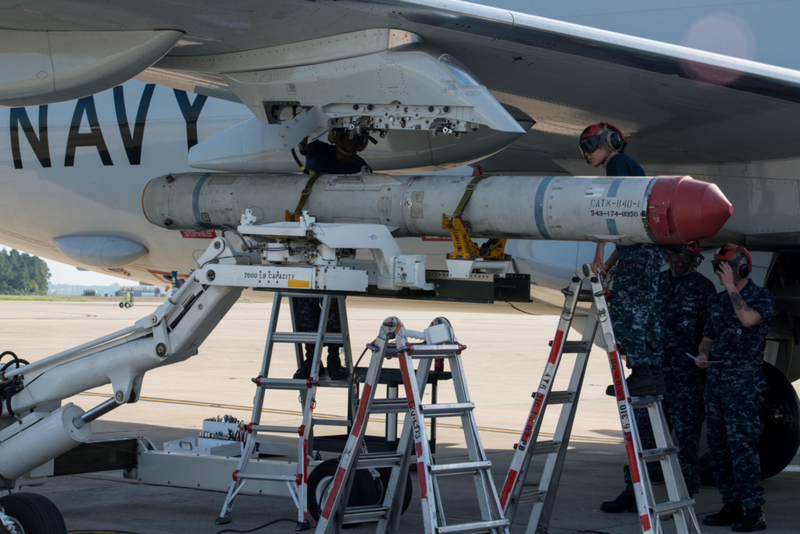
The AGM-84H/K SLAM-ER missiles are some of the most advanced missiles in the world, and feature advanced remote control technology that allows them to hit moving targets without risking U.S. fighters. The Navy recently contracted Boeing to manufacture more of these, and the deal was reportedly closed at around $12.3 million.
The Harpoon Missile
Harpoon missiles have been in development since the mid-’60s. They once had a range of 28 miles, but have recently been upgraded to five times that. These missiles are fast, precise, and very expensive. Each Harpoon missile cost the U.S. military just over a million dollars back in 2011, although the price has likely gone up significantly since.

Harpoon missiles are efficient at obliterating ships, and can be used in any weather. Their radar homing system helps them fly just above water levels, which prevents them from being detected or destroyed. Harpoons have been used in the Iraq war to great effect. They are a very expensive tool, but are more than worth their price.
Electromagnetic Personnel Interdiction Control (EPIC)
One of the Navy’s most interesting prototypes is the Electromagnetic Personnel Interdiction Control. This weirdly-named weapon, uses electromagnetic pulses to make their personnel targets ill and throw up. A prototype was created to test the idea of being able to neutralize an enemy without causing severe harm, as is always the case with bullets and explosions.

Despite being a promising idea, the EPIC’s development has recently been halted. It’s highly unlikely that the Navy will continue the development of this gun, although we would be lying to say if we said that a future with this war doesn’t sound really cool
The M61 Vulcan
M61 Vulcans are one of the Navy’s deadliest close-contact weapons. These are often a U.S. helicopter’s first line of defense when being shot, and have proved themselves to be very effective in a large range of situations. More than 3,700 U.S. aircraft contain these, and we’ll explain why right away.
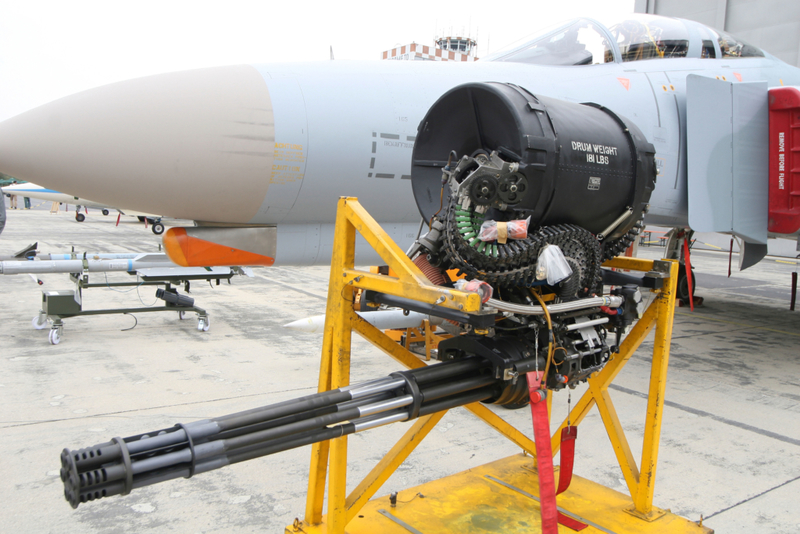
Vulcan turrets fire electrically primed 20mm rounds at rates of up to 6,000 rounds per minute. Their ability to cause both precise and general destruction has earned them the name “The Hand of Gun”. These are some of the Navy’s most effective offensive weapons and definitely live up to the name.
The Aegis Combat System (AWS)
The Aegis Combat System is an American naval weapon system fitted on most of the Navy’s ships. It’s produced and distributed by Lockheed Martin. This system uses advanced digital radar systems to track down and hit long-range threats. The U.S. Military has authorized the use of this technology to various other allied countries.
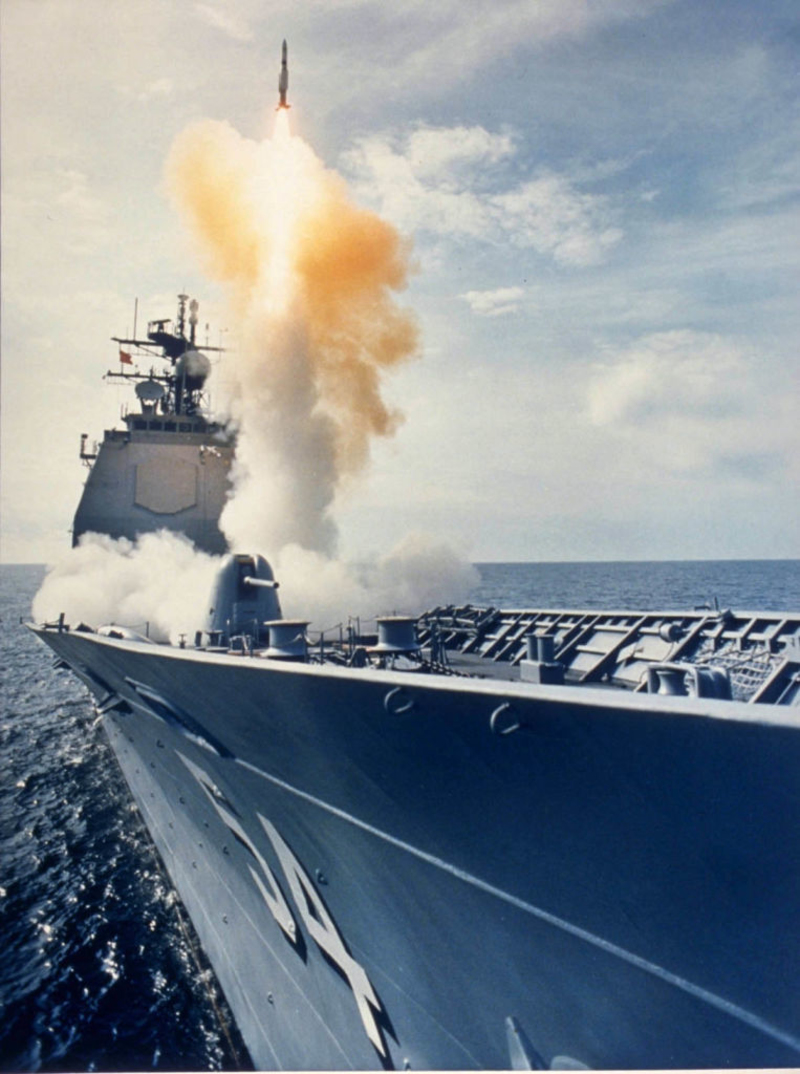
The name “Aegis” comes from Greek mythology and represents a protective shield, similar to the one used by Zeus. The Aegis Combat System locates aerial hostile units and helps track and destroy them before they cause harm. It was originally developed in the ‘60s, but with recent technological advances, it has become far more effective.
The Mark 60 CAPTOR
The United States chooses to only use one type of anti-submarine missile, the Mark 60 CAPTOR. This deep-sea missile holds a Mark 46 torpedo inside its aluminum shell. It weighs roughly 2,350 pounds and costs between $113,000 and $377,000. Once one of them is anchored to the ocean floor, it can usually wait there for months.
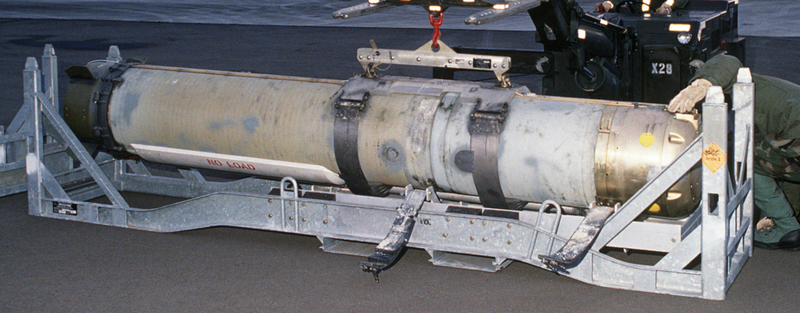
Once a Mark 60 CAPTOR missile is shot at its target, it fires the Mark 46 torpedo, which uses a sound propagation system to passively identify and differentiate between hostile and friendly units. These torpedoes are highly effective underwater weapons, and can destroy almost any ship or submarine on impact.
A Standard Missile
Standard Missile can easily sink ships, shoot down aircraft, and even destroy ballistic and cruise missiles in mid-air. Standard missiles come in a variety of models, with the most popular one being the RIM-66 Standard. An upgraded version, the RIM-67, features a much longer effective range than the regular one.
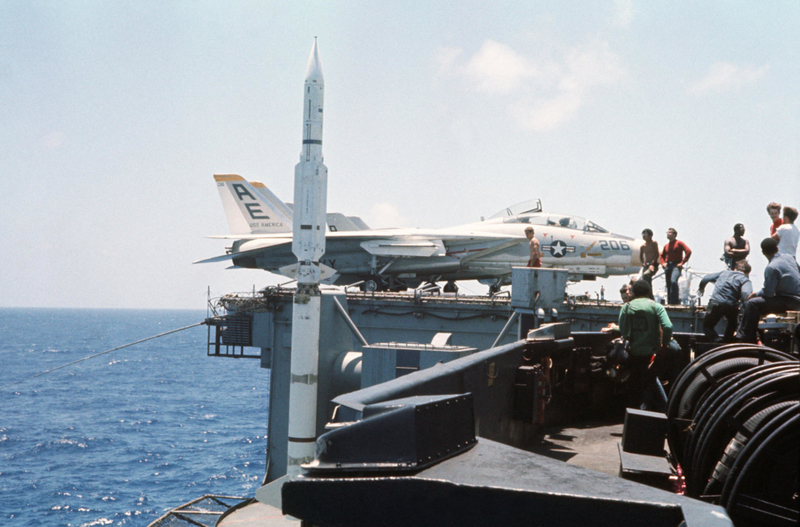
Standard missiles were first developed back in the early ’60s with the purpose of replacing some of their less effective counterparts. The RIM-66 Standard missiles are the latest version of these ballistic weapons, and are used by most of the United States, and allied European countries.
The Tomahawk Cruise Missile
Tomahawk Cruise missiles weigh almost 3,000 pounds and have a reach of up to 1,550 miles. They are mostly used against surface targets and can reach a speed of 550 miles per hour. These missiles are potent and lethal, which is why the U.S. Military uses them often. Tomahawk Cruise missiles can carry various different warheads, including nuclear ones.
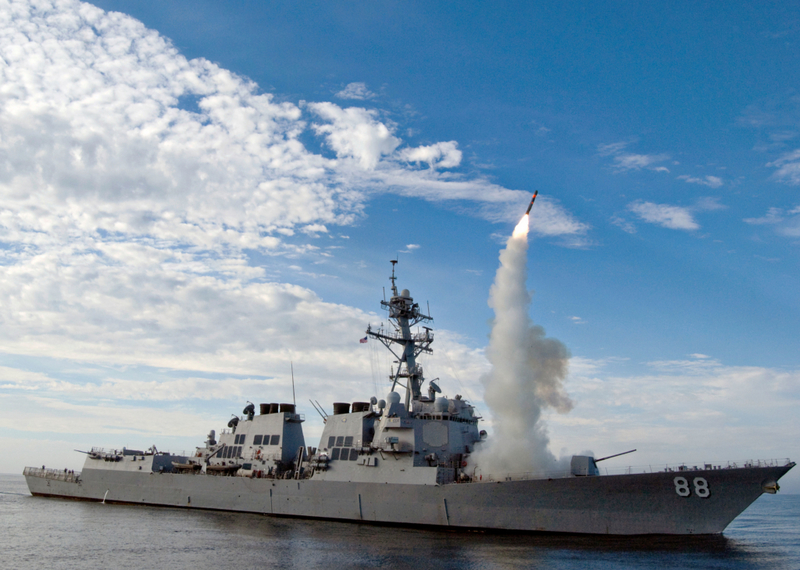
Their immense range and highly accurate GPS systems make them an ideal Navy weapon. Despite the Navy’s frequent use of Tomahawks, they have a great track record of almost unintended zero casualties, thanks to their ever-decreasing margin of error.
Advanced Gun System (AGS)
The newly designed Advanced Gun System is a staple of the Navy’s USS Zumwalt vessel, one of its newest and most advanced warships to date. It can host weapons that fire 155-millimeter bullets, which can penetrate through just about any armor. It has a much longer range than the Standard Gun, reaching distances up to three times further.

The Advanced Gun System fires rocket-powered, computer-guided shells that destroy anything in their path. Combining the U.S. Navy’s next-generation of destroyers, the USS Zumwalt, and the Advanced Gun System, helped America’s military create an extremely reliable and formidable defense system that deters most of its enemies.
A Laser Weapon System
The Laser Weapon System is currently being co-developed by the U.S. Navy and Boeing, and can fry sensors, burn motors, and detonate explosive materials. The laser system does this by shooting a laser directly at targets, overheating them in the process. The system was recently reported as being able to shoot down UAVs and fry boat motors in less than two seconds.
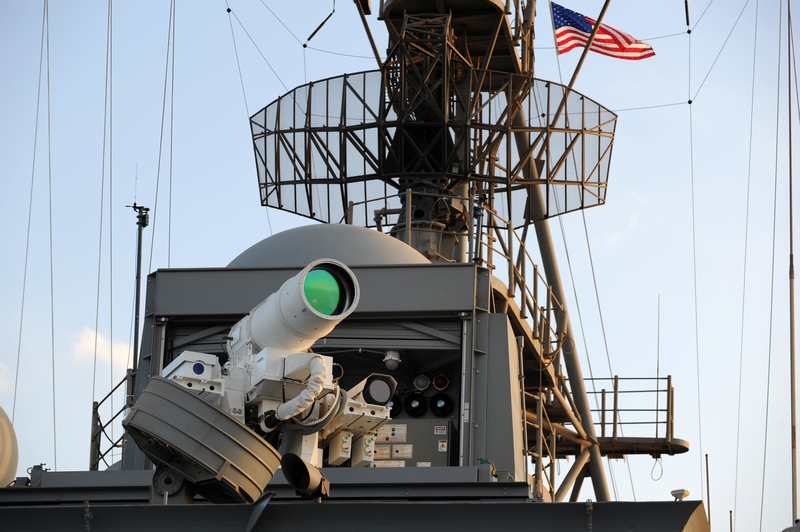
Although just one of these has been officially produced, it’s already proving to be an extremely cost effective solution, with each laser shot costing 99.999% less than the average missile. The Navy is currently working on lasers that are ten times stronger than the ones we’ve mentioned above. Yikes!
The CBU-100 Cluster Bomb
CBU-100 Cluster Bombs are basically the shotgun bomb of the U.S. Navy and are used to destroy armored vehicles. After being launched, they begin falling towards their target. When a collision is imminent a spring opens, dispensing many small bomblets that weigh 1.3 pounds each and are mounted with explosive warheads.

Each bomblet’s produces 250,000 PSI on point of impact, effectively penetrating up to 7.5 inches of armor plating. CBU-100 Cluster bombs are mostly used to destroy multiple highly armored threats in open areas. They were used mostly during Operation Desert Shield, when more than 15,000 of these were dropped on enemy units.
The M4A1
The most popular SEALs weapon is the M4A1, a tactical assault rifle that has been used by the U.S. military since 1994. It’s a favorite for various army units thanks to having a versatile range of uses and a high degree of damage per bullet. It also has a fantastic range of 600 yards, making it one of the best all-around guns in the world.

The M4A1 shoots 5.56 mm x 44 mm NATO caliber bullets, and can be customized in a variety of ways. It can fit anything from scopes, to handles and even mounted with grenade launchers. These weapons are deadly, and should not be used by untrained hands. Luckily, SEALs are some of the most highly trained personnel in the world.
The M2 Browning
The M2 Browning is the much heavier and deadlier version of the M240. It uses massive .50 BMG cartridges, which can cut even a heavy tank’s armor to shreds. Its bullets are highly accurate and come in many variants, including regular ball, tracer, armor-piercing (AP), incendiary, and sub-caliber rounds.

The M2 Browning weighs up to 127 pounds, which means it can only be used when docked. It has a range of over 8000 yards, although effectiveness drops past 2,000 yards. Each one of these costs about $14,000. They were mounted on almost every American warplane from 1939 to 1955 and continues to be used in various forms today.
The AGM-88 HARM
The AGM-88 HARM is an anti-radiation Navy missile. Despite common misconceptions, anti-radiation missiles have nothing to do with “nuclear” radiation, and seek electromagnetic radiation to hit their targets. Their main purpose is to destroy radio towers, radar systems and more. Enemies without these can’t use most of their warfare technology.

Each AGM-88 HARM missile costs $250,000 and has an effective range of 80 miles. They fly at about 750 miles per hour, which makes them almost unstoppable. HARM missiles were used extensively during 1991’s Operation Desert Storm and the 2003 Iraq War.
The FGM-148 Javelin
FGM-148 Javelins are the older, heavier and deadlier than the M136 AT4 missile launcher. Unlike the M136 AT4, rockets fired by the Javelin use infrared technology which help guide them to their targets. They can also fire multiple rockets in succession, unlike the single-shot of the AT4.
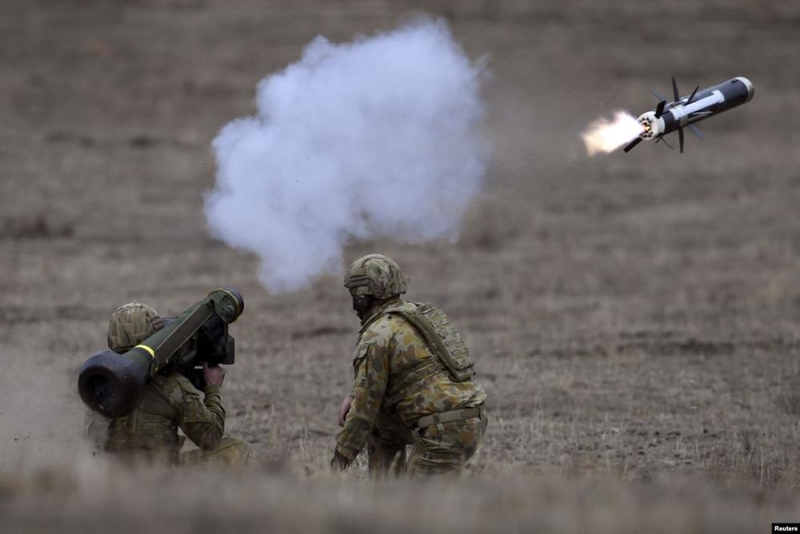
Javelin missiles can easily destroy a modern tank when fired from high ground, as well as building walls and bunkers. Each Javelin costs about $174,000 and is made by both Raytheon and Lockheed Martin. However, they weigh almost 50 pounds, which makes them much heavier and less easily portable than their AT4 counterparts.
The SCALPEL
Most of us associate the word scalpel with the popular surgical tool. Navy SCALPELs are also very precise but are mostly used to cause massive destruction. These bombs are extremely accurate, thanks to a laser-guiding system. The name SCALPEL is an acronym for Small Contained-Area Laser Precision Energetic Load.
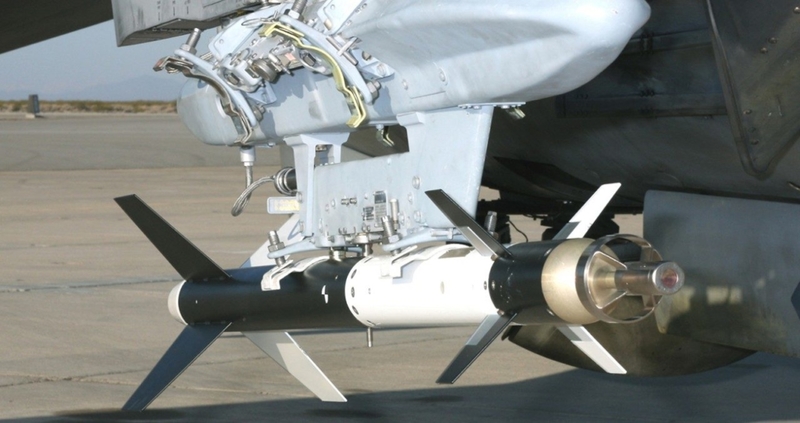
SCALPEL bombs can easily hit small and sensitive targets with surgical precision, rarely causing any collateral damage. These bombs can take down targets hiding inside densely packed civilian buildings. The Navy is currently rolling out SCALPELs for initial testing, with many more expected in the coming years.
The Ship Self-Defense System (SSDS)
Missiles such as the Evolved Sea-Sparrow and Rolling Airframe require a launcher to properly function, which is where the Ship Self-Defense System comes in. This launcher can also be used to deploy decoys and other defensive measures.
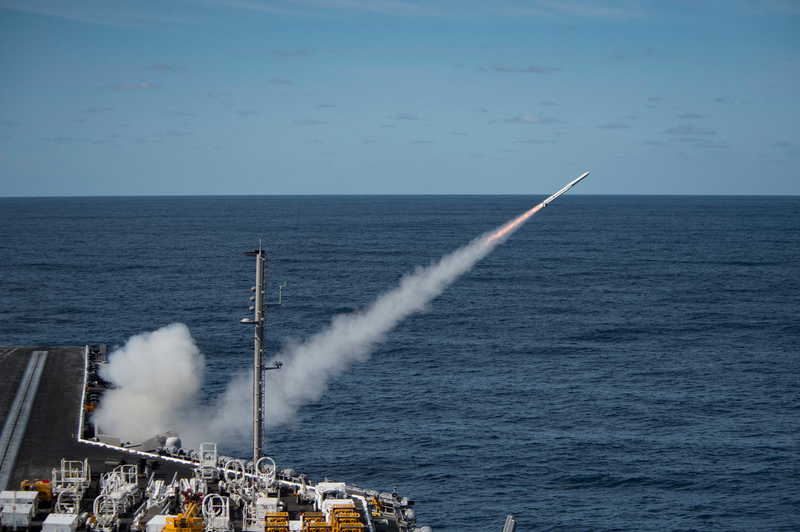
The Ship Self-Defense System offers a huge benefit by being able to automate the fire control loop, which shortens the time it takes from detecting a threat to eliminating it. It’s a very common feature on many Navy units, and has saved many lives over the years.
AGM-154 Joint Standoff Weapon (JSOW)
The AGM-154 Joint Standoff Weapon is another U.S. Navy warfare explosive produced by Raytheon. These air-to-ground bombs are much cheaper than most and feature an internal GPS-inertial navigation system and thermal imaging infrared seeker.
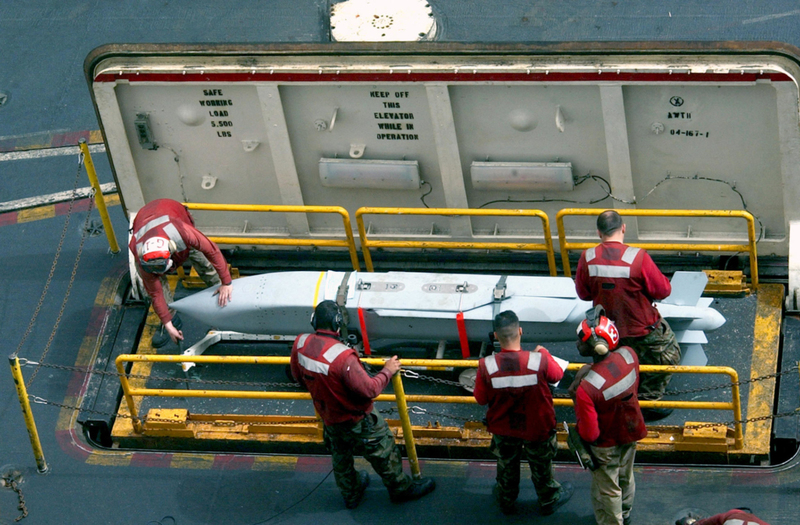
The AGM-154 Joint Standoff Weapon is mostly used to destroy targets that are outside the normal range of missiles, and allow pilots to stay out of harm’s way. The JSOW C-1 variant has an even longer reach, and can be used from more than 60 miles away.
The Glock 19
It costs over a million dollars to train just one Navy SEAL, so you’d expect them to get only the best when it comes to weapons. In 2006, Navy SEALs decided to ditch their standard SIG SAUER P226 handguns in favor of the Glock 19. This switch caused a massive bump in Glock handgun purchases.

Glock 19’s weigh 1.5 pounds when unloaded, making them about 50% lighter than the SIG SAUER P226 MK25. The biggest benefit for Navy SEALs when using a Glock 19 is that they’re much easier to handle than their previously issued handgun. This helps improve aiming skills, drawing skills and more.
The Evolved Sea Sparrow
The RIM-162 ESSM, also known as the Evolved Sea Sparrow, is a stronger and more advanced version of the aforementioned Sea Sparrow Missile. These upgraded missiles feature counter supersonic maneuvering abilities, making them very hard to intercept in mid-flight.
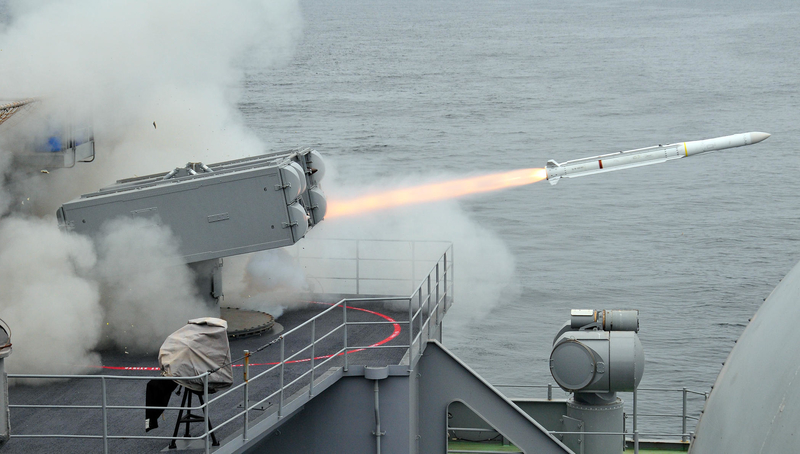
Evolved Sea Sparrows work in tandem with the Aegis Combat System, which holds up to four of these at once. Such advanced missiles don’t come cheap, as each one costs a million dollars. This means that your average fully-loaded Aegis Combat System is carrying about four-and-a-half million dollars’ worth of equipment.
Heckler & Koch HK416
Heckler & Koch HK416 is widely known for its use by Navy SEAL units. It’s one of a SEAL’s main weapons, and was recently used to kill Osama Bin Laden. An HK416 weigh 6.5 to 8.5 pounds and can be bought by U.S. civilians all across the United States.

Almost every division of the U.S. government and military force uses the Heckler & Koch HK416, including the CIA, FBI, Marine Corps and even the NASA Emergency Response Teams. The weapon has become quite popular due to its lightweight, high reliability, and easy customization.
The AIM-9 Sidewinder
The AIM-9 Sidewinder is a series of short-range missiles that are the primary weapon for U.S. aerial warfare. Sidewinders are credited with more than 300 take-downs of hostile aircraft. These missiles highly cost-effective, and exist in a large and abundant supply for the United States Military.
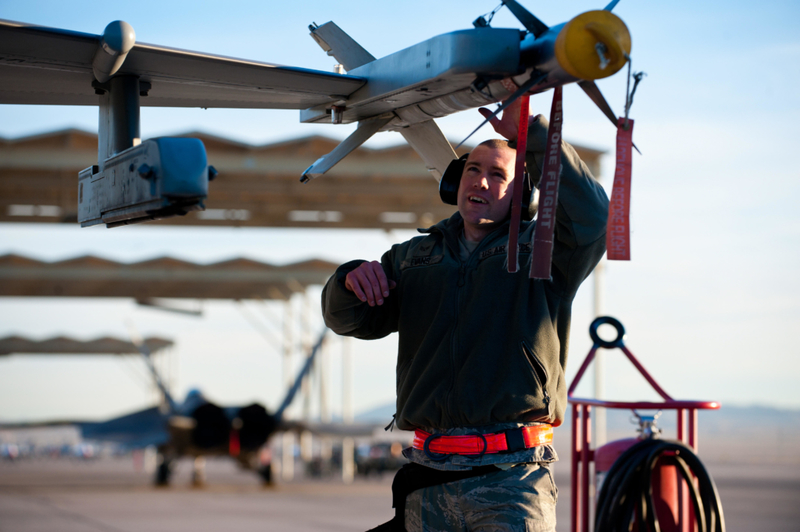
It’s been reported that the military has amassed more than 110,000 units of these. The AIM-9 Sidewinder uses state-of-the-art heat-seeking technology that helps guide the missile towards its targets. Another major feature of the Sidewinder is its on-board infrared sensor, which enables it to accurately track its targets.
The Trident II (D5) Missile
UGM-133A Trident II missiles are some of the Navy’s most important and deadly ballistic weapons. A single Trident II missile can annihilate a small country, or cripple a larger one. They’re one of the reasons why nobody ever goes to war with the United States. Such powerful missiles aren’t cheap, as each Trident II costs around $30 million.
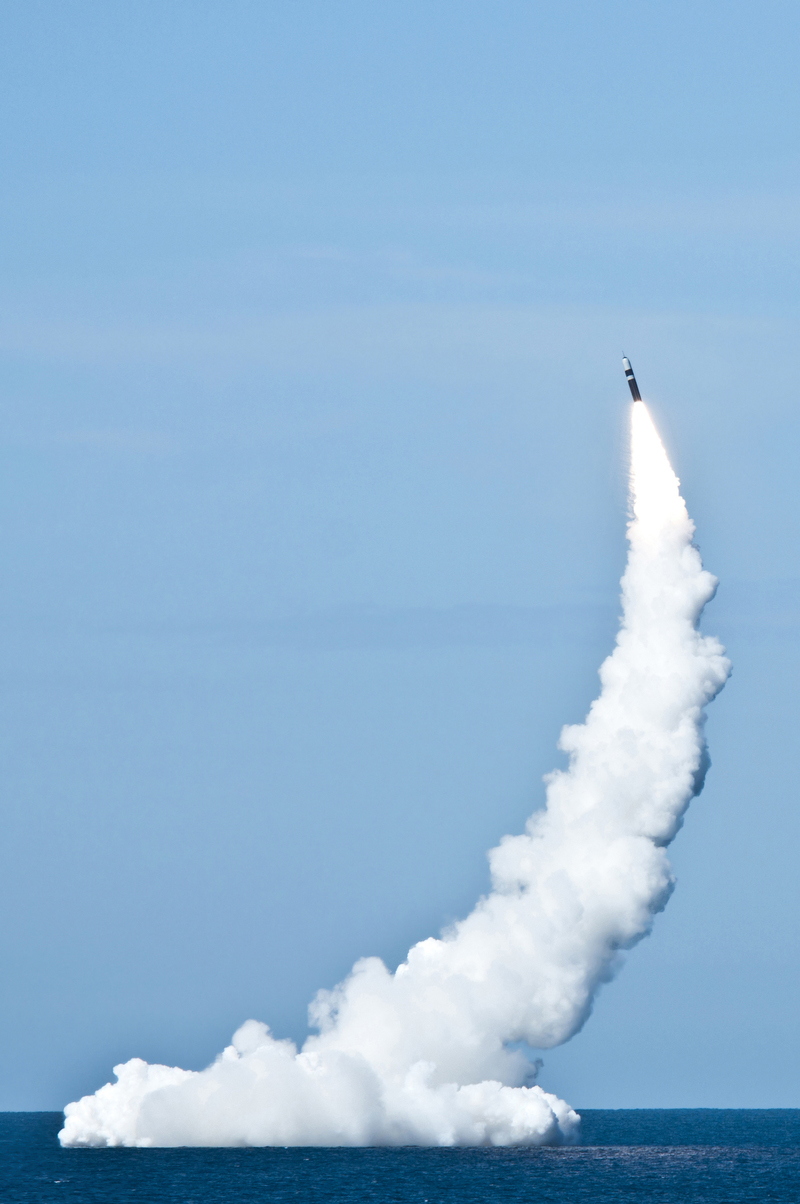
Trident II missiles are extremely heavy, and weigh around 130,000 pounds. The U.S. Navy currently has fourteen Ohio and four British Vanguard-Class submarines that carry the Trident II. Each Ohio has twenty-four of these loaded, and each British Vanguard has sixteen.
The Mark 82 Bomb
The Mark 82 bombs are unguided, general-purpose war tools, and are a part of the Navy’s Mark 8 series. Their popularity comes from having the perfect balance between precise and area damage. They are highly potent, but also accurate. Mark 83 bombs on the other hand, cause way too much damage to be used extensively.

Each Mark 82 bomb costs around $2,000, according to a 2001 report, though the price likely went up considerably since. They are dropped in bulk, and are usually used to destroy long and large hostile areas. Their main advantage is being able to inflict heavy collateral damage while smashing armored-plated vehicles to bits and pieces.

The Real Reason People Panic-Buy
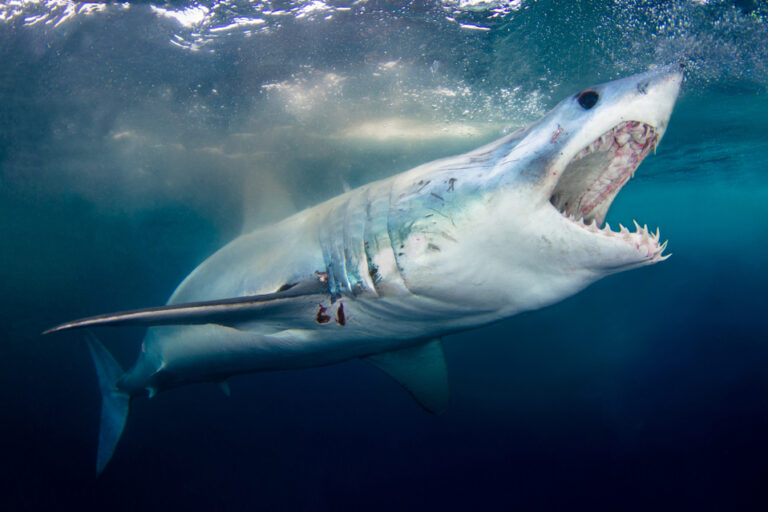
The Skin of the World’s Fastest Shark Could Be Used in Aviation

What’s Worth Knowing About Animal Intelligence

Why Flamingos Are Pink?

Everyday Things That Have Hidden Uses
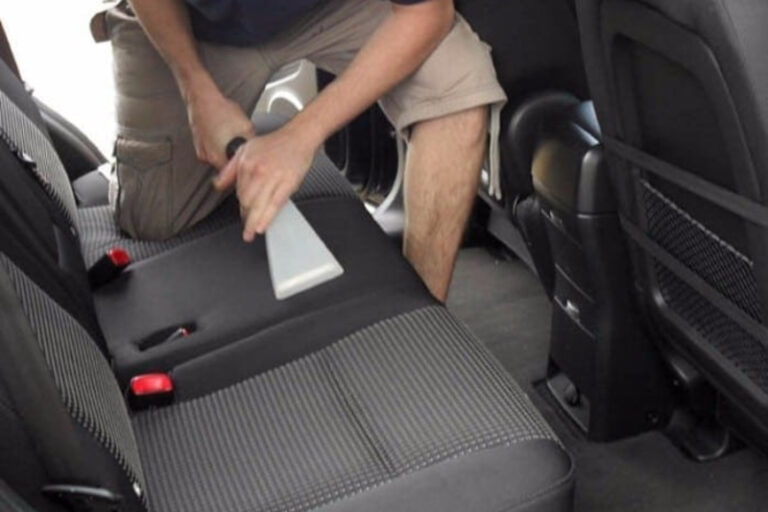
More Secret Car Cleaning Hacks Revealed

Cringe Worthy Car Trends That Have Got To Go

The Strangest Products From Amazon That People Actually Love

The Story Behind The Mysterious Hole Spotted In A Lake In California

Check Out These Creative Ways Aluminum Foil Can Improve Your Life






















